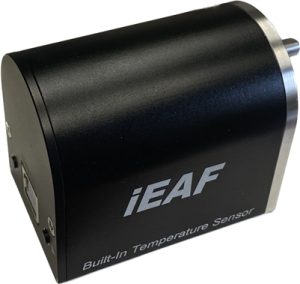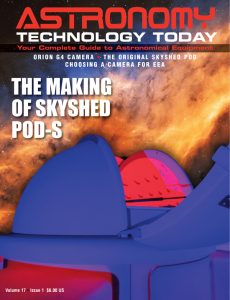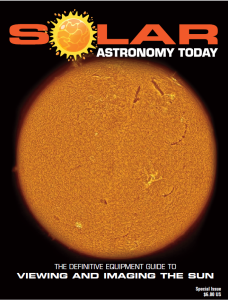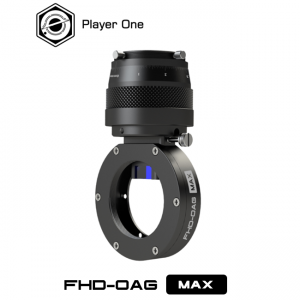The iOptron Electronic Automatic Focuser (iEAF) is designed to work with Crayford and Rack-and-Pinion focusers and is powered by a 5V USB port.
 The focuser allows for precise focus control for deep-sky and planetary imaging. And while the iEAF simplifies focuser control, the convenience of automatic focusing is probably more appreciated during freezing winter nights or hot summer nights when you might otherwise be fighting mosquitos while focusing the telescope.
The focuser allows for precise focus control for deep-sky and planetary imaging. And while the iEAF simplifies focuser control, the convenience of automatic focusing is probably more appreciated during freezing winter nights or hot summer nights when you might otherwise be fighting mosquitos while focusing the telescope.
The iOptron Electronic Automatic Focuser is ASCOM compatible and will work with most planetarium and imaging software. It offers a very quiet operation, has zero backlash and position memorizing during power off. It is lightweight at only half a pound and has a payload capacity of 11 pounds. The focuser can be controlled manually and includes a built-in temperature sensor.
Included in the package is the electronic automatic focuser body, a mounting plate, four adapters for 5 mm, 6 mm, 7 mm, or 8 mm focuser shafts, three Allen wrenches/hex keys (2 mm, 3 mm, 4 mm), a USB2.0 cable for power and focuser control, two M5x10mm socket head screws and washers and two M4x8mm socket head screws and washers.
The iEAF specifications include:
– Focuser: Crayford or Rack-and-Pinion focuser
– Driving train: Stepper motor
– Power/Communication: USB2.0 port
– Maximum payload: 5 kg
– Temperature Sensor: Yes (Built-in)
– Control: ASCOM compatible or manually
– Focuser speed: 3 rpm
– Dimensions: 51 X 61 X 41mm
– Weight: 254g (focuser only)
You can learn more about the iOptron Electronic Automatic Focuser here.

 And to make it easier for you to get the most extensive news, articles and reviews that are only available in the magazine pages of Astronomy Technology Today, we are offering a 1-year magazine subscription for only $6! Or, for an even better deal, we are offering 2 years for only $9. Click here to get these deals which only will be available for a very limited time. You can also check out a free sample issue here.
And to make it easier for you to get the most extensive news, articles and reviews that are only available in the magazine pages of Astronomy Technology Today, we are offering a 1-year magazine subscription for only $6! Or, for an even better deal, we are offering 2 years for only $9. Click here to get these deals which only will be available for a very limited time. You can also check out a free sample issue here.
The Sun is more active than it’s been in years and if that’s not enough, we have the Annular Solar Eclipse on October 14, 2023 and the Total Solar Eclipse on April 8, 2024! If you’d like to learn more about the technology behind solar observing, solar imaging and more, you can check out our free publication, “The Definitive Guide to Viewing and Imaging the Sun”. You don’t have to sign up or provide any information, simply click here and enjoy reading!



